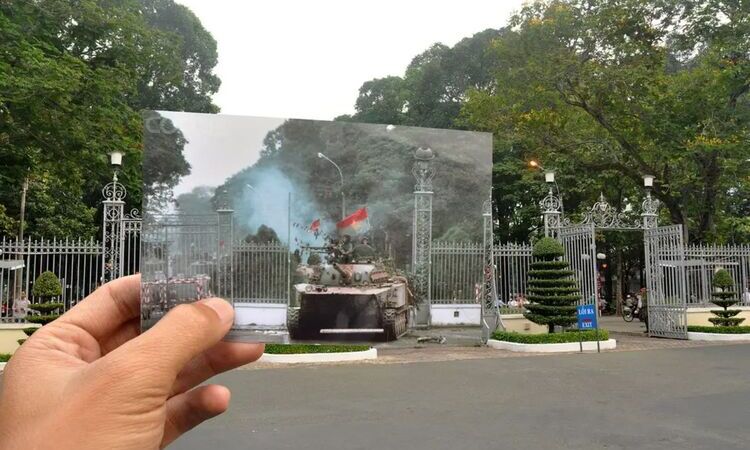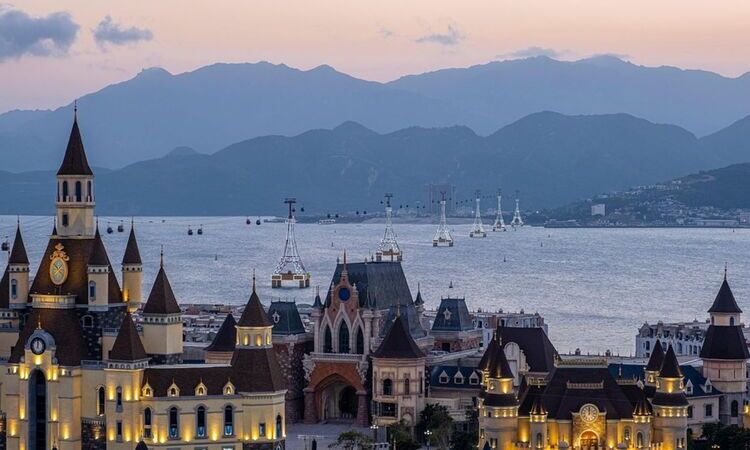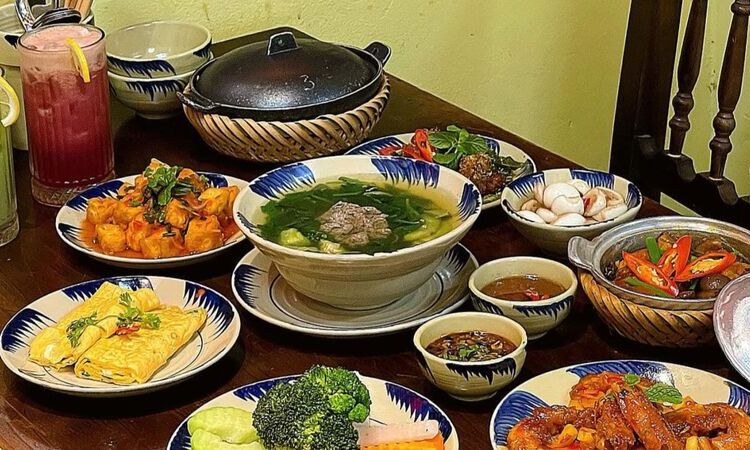7 Unique Ways to Spend a Weekend in Saigon
Saigon (a common name of Ho Chi Minh city) is a strange place. People may think that they understand it, explore all or its corners but someday they find out that this city offers more things to feel, taste, smell, or do than they have ever imagined. It's chaotic, crowded, tiring with traffic jam every day, noisy with bars and pubs all nights but it never let anyone get bored with as all things here are so real, lively and attractive. Well, if you have a weekend in Saigon, just try 7 following things then you’ll gradually feel the lure that only it has.
1. Try a full taste of Saigon
Saigon is the biggest city in Vietnam yet the food paradise that can feed you every time even 1 am early in the morning or 11.00 pm late at night. With an early start, a full morning here will suffice by a bowl of Hu Tieu - a noodle soup consisting of rice noodles with pork stock and toppings easily found at any street corners around Saigon. For the original Vietnamese- southern taste, you’d better go to some small food stall like ones at 62 Truong Dinh- District 1, or 46 Vo Van Tan, 44 Le Quoc Hung…

Then just stroll around Notre Dame Cathedral or Con Rua lake, Han Thuyen street…. to take a sip of street milk coffee (called “cà phê sữa đá” in Vietnam) and sit down on the pavement, chitchatting with the locals to experience what Vietnamese people call- Cafe Bệt- another unique way to drink cafe in Saigon. After walking down crowded avenues of Saigon, just take a break and award yourself with a loaf of Bánh Mì- one of the tastiest sandwiches in the world. The best Banh Mi is easily found in Bay Ho - a 70-year-old food stall on Huynh Khuong Ninh street, from some Chinese vendors along Nguyen Trai street, or Vo Van Tan with all types of flavors and ingredients ranging from omelet, pate, to barbecue pork. A loaf of Banh Mì is not enough for lunch without mouthwatering street deserts like stirred rice pancake salad, Tofu, Pha Lau… around District 3 and 2 or in Binh Tay market.

A loaf of Banh Mi (sandwich) in Saigon[/caption] For dinner, there are plenty of choices in each district but District 5 is the most famous with special meals created by Chinese families so long time ago. If you plan to go there, spend at least 2-3 hours to experience signature dishes of District 5 like roasted duck, dim sum, special duck egg noodle soup, crab soup… etc

Sai gon Dimsum[/caption] Finally, you can stop by some street vendors in District 10 or 11 and end your Vietnamese food tour around Saigon with the sweet or sour flavor of Vietnamese, Cambodian or Thai sweet soup (called Chè in Vietnamese).
2. Adventure journey through Cu Chi Tunnels
Cu Chi tunnels are not only a distinctive historical memorial site in the south of Vietnam but also a good place to explore Vietnamese unique architecture symbol in the past. The tunnels of Củ Chi are an immense network of connecting underground tunnels located in the Củ Chi District and are part of a much larger network around Vietnam. The tunnels were used by Vietnamese Communist soldiers as hiding spots during combat, as well as serving as communication and supply routes, hospitals, food and weapon caches and living quarters for numerous North Vietnamese fighters. Visiting Cu Chi tunnel, you will experience the difficulty of the life inside the tunnels as well as the stoutness of Vietnamese people and soldiers during the war. You can crawl around in the safer parts of the tunnel system: The Ben Duoc and Ben Dinh site, Besides, you may have a chance to taste a simple meal of food that Vietnamese Communist soldiers would have eaten in the war. Above-ground attractions include caged monkeys, vendors selling souvenirs, and a shooting range where you can fire a number of assault rifles, such as the M16 rifle or AK-47, as well as a light machine gun like the M60. A tour along Cu Chi tunnels is like an adventurous journey into the past and will take you at least a full day to explore all the sites but believe me, it never lets you down.
3. Soul-treatment alongside Saigon river:
A week full of stresses, busy with work will be drifted away after a weekend at An Lam Saigon River- a brand new place for people who love the peacefulness, spa and some moments of enchantment in this crowded Saigon. Nestled under a shaded tropical canopy, An Lam Retreats Saigon River is a 15-minute boat ride from Saigon’s busy centre. You can make an idyllic escape with 19 spacious suites and villas spread across a lush garden, enjoying the delicious Western and Vietnamese restaurant, luxurious spa, and meditative plunge pool.

In An lam Saigon River, you can arrange a private cruise with canapés along Saigon river, slowly sipping sparkling wine and watching the sunset sinking below the picturesque skyline of Saigon. For people love the eco-friendly experience, exploring Cần Giờ Mangrove forest is a must-try. Taking a scenic speedboat journey to the dense riverside jungle of the Can Gio UNESCO Biosphere Reserve, you will explore Giant Bat Lagoon by rowboat, visit a crocodile reserve, trek through mangroves, meet monkeys and enjoy a spot of bird watching.

4. Learn to cook Vietnamese dishes
A food tour with splendid of Vietnamese dishes does not satisfy you? Let’s try something more challenging - Vietnamese cooking class. Unlike any other culinary style in South East Asia, Vietnamese cuisine is a mixture of Vietnam traditional style with China vibe and Western-inspired trait, which reflects in a variety of dishes from the South to the North of Vietnam. Saigon is a land of immigrants from all provinces in Vietnam, thus, it is smart choice to take a cooking class here.

Interesting cooking classes available for foreigners can be booked in any tour agent along Bui Vien streets. Here are some recommendations:
- A Lam Saigon Riverside: cooking classes with 5-star-restaurant chefs.
- “Mai" Home - The Saigon Culinary Art Centre
- Chef Vu Cooking Class
- Cycloresto Cooking Class
- The Grain Cooking Class
5. A walk into the past of Saigon
Just immerse yourself in a walking tour of Vietnamese history in District 1- the district for tourist in Saigon. To begin with, show up at the Reunification Palace on 135 Nam Kỳ Khởi Nghĩa, then walk through the park straddling Le Duan street towards the Notre Dame Cathedral and Post Office. With French architecture, they are all representative of the French Colonial Time in the South of Vietnam.

After some picture taking and sightseeing, head down Dong Khoi where the Saigon Opera House awaits your appraisal. Continue straight down the avenue until you reach the Saigon River. A warning as you take pictures: beware of wily strangers and never accept cyclo tours from anyone on the street.
To feel the past of Saigon in the intense internal war, a visit to the War Remnants Museum is a sobering experience – but an important one. Containing exhibits relating to the Vietnam War and the first Indochina War with the French colonialists, it features photographs, military vehicles, and various weapons. It’s rare to see the horrors of war displayed so starkly. Graphic photographs depict the effects of the USA’s chemical weapons – Agent Orange, napalm, and phosphorus bombs.
6. Enjoy Nguyen Hue Walking Street
An alternate people watching option for crowded Bui Vien or Pham Ngu Lao street is Nguyen Hue Walking Street. It is a 60m wide pedestrian strip that runs from the colonial era People’s Committee Building, with its Ho Chi Minh statue, 900 meters down to the Saigon River.
Nguyen Hue walking street put officially into operation on 29 April 2015. As scheduled, on weekdays, vehicles are still allowed to run along Nguyen Hue street, but from 6 pm to 1 am on Saturday and Sunday, all kinds of vehicles are banned to travel here. The old Nguyen Hue Flower Street now becomes a square and the first walking street of Saigon. It just likes Saigon that is changing in every breath and in every moment. However, despite changes, Saigon remains deep impression in the heart of tourists.

Nguyen Hue St is characterized as a landmark public space. The crowds of locals that descend each night provide that in spades. They come to walk, socialize, sing, dance and ride hover-boards. And they more than compensate for the blandness of the physical space. It is the place where you can feel the life of Saigon Local people and the liveliness of non-stop Saigon in the most direct way.
7. Explore a spiritual Saigon via churches, temples, and pagodas
Not many people know about Saigon religious side, however, this city offers more to explore as it both has Catholicism church, Buddhism pagoda, Taoism temples alongside Cao Dai Holy Place and Hindu Temple. You can start your religious journey from Notre Dame Cathedral. Saigon Notre Dame Cathedral, built in the late 1880s by French colonists, is one of the few remaining strongholds of Catholicism as well as the symbol of Saigon. Aside from its status as one of Ho Chi Minh City’s most prominent attractions, Saigon Notre Dame Cathedral still serves as a religious institution for the local population. The best time to visit is during Sunday mass at 09:30 where it is open for visitors.

If you are interested in Buddhism holy places, just take a short trip to some top famous temples and pagodas in Ho Chi Minh City. The oldest yet outstanding one is Giac Lam pagoda and its highlight focuses on the complex of towers built at the beginning of the 19th century. Unlike others, Giac Lam Pagoda was designed under the South Vietnam’s architectural style. There were a total of 38 multi-sized towers, based on the combination of the architectural style of the ethnic minorities and light resemblances of both Western and Eastern architecture.

Saigon is the only city in Vietnam that has a Hindu temple as this religion in Vietnam is worshipped by a very small portion of the population. The only one here is Mariamman Hindu Temple, which is dedicated to Mariamman – the God of fertile land, excellent crop, good health, and happy life. Built at the late 19th century, the temple has been still well-maintained, thanks to the great assistance from the government.

Now you may have some ideas on how to spend a weekend in Saigon, right? Don’t wait until Friday to set all things up, start now to plan for rare spectacular days off of the week. If you still find it hard to know where to start for the amazing weekend in Saigon, let us lend you a hand offered by our Vietnam Travel experts.




